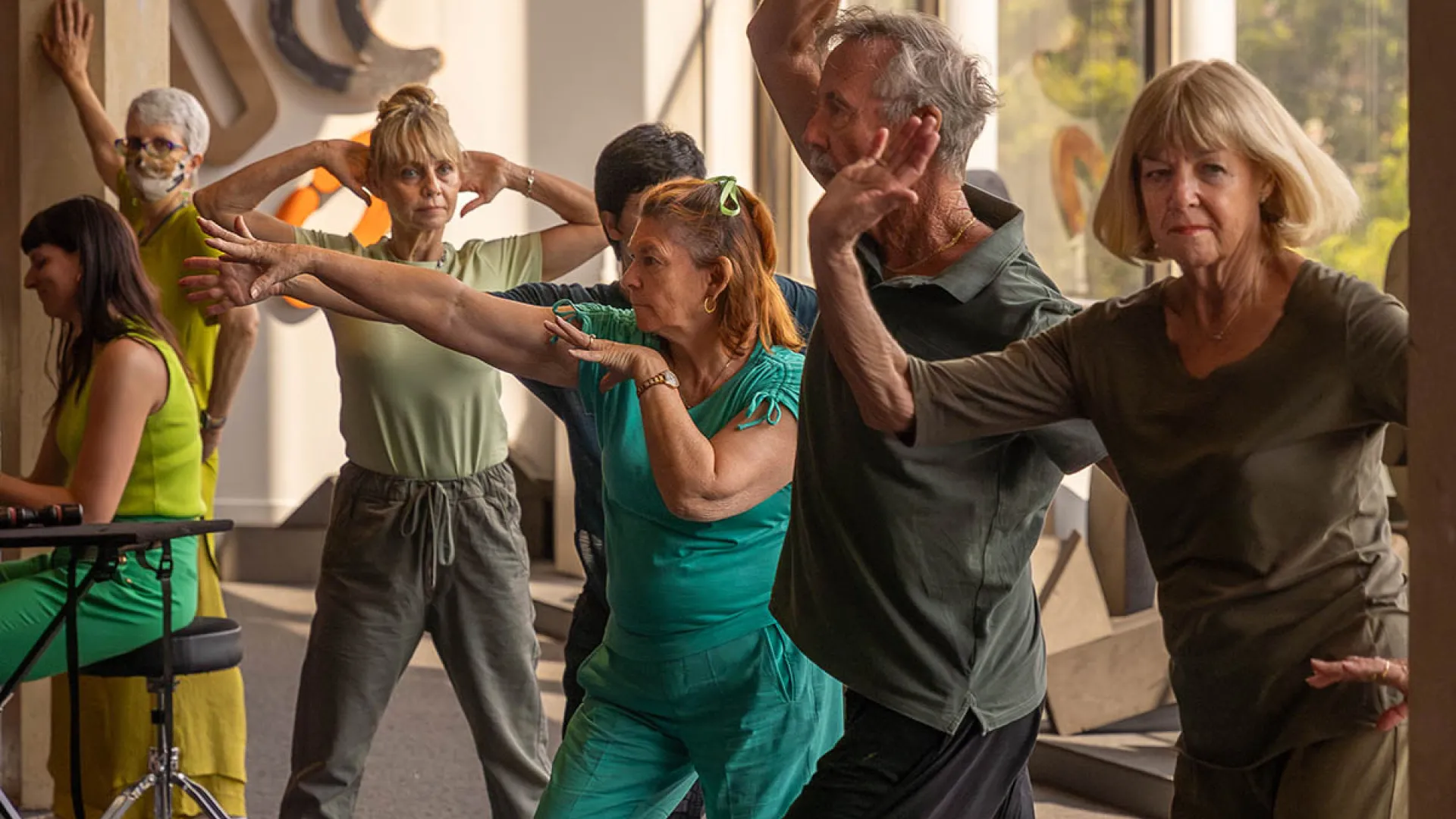Why did you apply for MATCH Lab and why were matched funds so important for your project?
I have spent much time in the arts-grant sphere, with 35 years supporting my dance practice through writing, receiving and acquitting grants, across the funding continuum from comprehensive triennial federal funds through to small local lotteries/organisations. I have sat on numerous national, state and local government and non-government assessment panels to determine funding applications as we divvied up a small amount of funds to a few lucky artists and organisations.
I have been reassured by attending MATCH Lab, that there can be assisted, alternative non-grant pathways that are developing, which can help to secure funds to support arts practices in flexible, adaptive, caring and responsive ways. I found that in MATCH Lab and through the Australian Cultural Fund platform.
Tell us about your fundraising strategy?
The strategy involved direct, personal contacts, together with a 20-day fundraising campaign across December – January, which was shared through the Lifespan Dance database, and a variety of community contacts.

Seated Dance. Photo: Paige Gordon
What were your most significant achievements?
We were able to achieve an impactful and significant program of classes, performances and partnerships in the subsequent year of programming.
Community Classes: We were able to ‘sprout’ our Community Class locations and offered these classes across the year. We implemented the two-teacher mode of teaching class, which felt like such a wonderful achievement, in line with best practice in the Dance for Parkinson’s methodology. We were also able to monetise these roles meaning regular paid work for teaching dance artists, blossoming the WA dance ecology that little bit further.
We were able to partner with local performing arts organisations and councils, who offered in-kind support in terms of studio costs, or a subsidised rate charge. This has led to sustainable partnering, offering classes to community in a reliable, consistent manner across the year. This has flow-on effects for people attending classes, and means there can be efficient time management for the dance artists in terms of class creation, class planning and staffing.
Outreach: There have been opportunities to take Seated Dance classes out to aged care settings to community members that would not ordinarily be able to attend in-studio classes. The outreach classes have grown – doubling in number compared to the previous year.
Digital Library: Together with videographer Lee Kennedy, I have continued to expand the Digital Library, recording seated dance sequences, which will become digital seated dance class sequences.
Strategic community partnerships: Developed and consolidated with local arts organisations and local councils and interest groups such as WA Ballet and Parkinson’s WA.
Creatively, there have been wonderful opportunities built from the stability provided from the funding. We received a grant from the City of Mandurah – to create and perform a new seated dance work WHORL at the Mandurah Arts Festival – which was very successful project. We consolidated the partnership with AGWA (Art Gallery of Western Australia) through the WHORL workshop and performances.
The Lifespan teaching dance-artists worked with independent choreographer Brooke Leeder & Dancers, who taught us an excerpt of her new work Nocturnal and then built the choreography to the community classes, connecting the profession to the community.
Attending MATCH Lab was the gift that keeps on giving!
How did you contact your donors and form relationships during the campaign and post-fundraising?
I found the relationships with donors flourished through a variety of communications – direct contact through email, texts, coffee chats, and invitations to class and performances. Bi-monthly newsletters and in-between updates were also helpful. I also found donors to be genuinely interested in Lifespan Dance and its direct impact on people’s lives.
Were there any unexpected results?
MATCH Lab challenged me to create new thinking about my dance practice and to take up the generous opportunity to have the philanthropic funding matched dollar-for-dollar up to $10,000.
MATCH Lab was a wonderful place to be for two days. I relished the opportunity to meet and listen to creatives explain their journeys and pathways in film, theatre, music, composition, dance-making and how their practice interweaved with the pursuit of funds. I revelled in hearing the creative projects from the artists in the room, the language they used, the enthusiasm, the passion and at times the doubt. It seemed to me that artists in some genres (film) are more familiar with the notion of sponsors and donors, so it was also helpful to hear from this lived experience. We were all there to be open to learning about how to ‘ask for money’ in non–grant pathways, and it was liberating.
Is there anything you would do differently?
In some countries there are extensive legacies of patronising the arts and supporting through private donors and sponsors. With the help of ACF, MATCH Lab and Creative Australia, we are progressing the development of private philanthropy in Australia.
I have been challenged to see my work as something that people would like to support with their own finances, and it has taken some assurance to grow confident about that – MATCH Lab and the team at ACF have assisted comprehensively and I am so grateful. So, onwards we go together, to create, innovate and to re-imagine.
What is your top tip for someone applying for this program in the future?
Go for it! Artists and arts leaders are continuing to re-imagine a world which recognises and values the vitality of the arts for our wellbeing, social cohesion and community connections.
MATCH Lab can help with upskilling and clarity, to re-imagine new pathways to connect, communicate and support your own practice, that is a gift to be shared.



